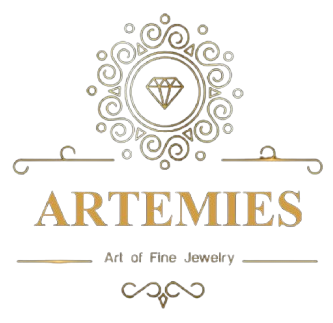
- Jewelry Market
Who Are the Key Leaders Shaping the Lab-Grown Diamond Industry?
Table of Contents
1- How Lab-Grown Diamonds Are Made
Lab-grown diamonds are created using two primary methods:
1.1. High Pressure High
Temperature (HPHT)
o Process: This method mimics the natural conditions under which diamonds form in the Earth. Carbon is placed in a pressurized chamber with a metal catalyst and exposed to temperatures of around 1,500°C and pressures of about 1.5 million pounds per square inch. Under these conditions, the carbon crystallizes into a diamond.
o Applications: HPHT diamonds are often used in industrial applications due to their affordability and the ability to produce large quantities. However, they are also used in fine jewelry.
2.1.Chemical Vapor Deposition (CVD)
o Process: In the CVD method, a diamond seed crystal is placed in a chamber filled with carbon-rich gases, such as methane. The gases are heated to around 800°C, causing the carbon atoms to break apart and deposit onto the seed, gradually forming a diamond layer by layer.
o Applications: CVD diamonds are typically used for high-quality gemstones in jewelry due to the ability to control the purity and size of the diamond.
2- Companies Famous for Lab-Grown Diamonds
1.2. De Beers (Lightbox Jewelry)
o Location: United Kingdom
o Contribution: De Beers, traditionally a natural diamond giant, launched its Lightbox brand, which focuses on affordable, fashion-oriented lab-grown diamonds. This move has significantly influenced the lab-grown diamond market.
2.2. Diamond Foundry
o Location: United States
o Contribution: Diamond Foundry, based in California, is known for producing high-quality, sustainable lab-grown diamonds using renewable energy. The company has attracted attention for its eco-friendly practices and celebrity endorsements.
3.2. ALTR Created Diamonds
o Location: United States and India
o Contribution: ALTR specializes in lab-grown diamonds and is recognized for its innovative approach to creating high-quality diamonds for both fashion and bridal jewelry.
4.2. Swarovski
o Location: Austria
o Contribution: Swarovski, a renowned brand for crystals, has expanded into the lab-grown diamond market, offering its own line of lab-created diamonds for jewelry.
5.2.New Diamond Technology (NDT)
o Location: Russia
o Contribution: NDT is known for producing some of the largest lab-grown diamonds in the world using the HPHT method, pushing the boundaries of what is possible in lab-grown diamond production.
3- Countries Famous for Lab-Grown Diamonds
1.3. United States
Industry Leaders: The U.S. is home to some of the most prominent lab-grown diamond producers, such as Diamond Foundry and ALTR Created Diamonds. The country is also a significant market for lab-grown diamonds due to growing consumer demand for ethical and sustainable products.
2.3.India
Global Hub: India has become a major player in the lab-grown diamond industry, particularly in the manufacturing and cutting of diamonds. The country’s expertise in diamond processing has translated well into the lab-grown sector.
3.3. China
Mass Production: China is one of the largest producers of lab-grown diamonds, particularly using the HPHT method. The country’s focus on industrial applications and affordable consumer products has led to large-scale production.
4.3.Russia
Technological Advancements: Russia, with companies like New Diamond Technology, is known for pushing the technological boundaries in lab-grown diamond production, particularly in creating larger stones.
4- Countries Investing in Future Production
1.4.United States
o Investment Focus: The U.S. continues to invest in research and development for more sustainable and energy-efficient methods of producing lab-grown diamonds. The demand for eco-friendly options is driving innovation in this sector.
2.4.India
o Government Support: The Indian government has recognized the potential of lab-grown diamonds and is supporting the industry through policies and incentives. This is expected to further boost India’s position as a global leader in lab-grown diamond production.
3.4.China
o Expansion Plans: China is likely to continue expanding its production capabilities, focusing on both industrial and gemstone-quality diamonds. The country’s vast manufacturing infrastructure positions it well to dominate future production.
4.4.United Arab Emirates
o Emerging Player: The UAE is emerging as a new hub for lab-grown diamonds, with significant investments in advanced technology and production facilities. The country aims to become a major supplier in the global market.
These countries and companies are at the forefront of the lab-grown diamond industry, driving innovation and expanding production to meet growing global demand.
5- Key industry players?
Key players in the lab-grown diamond industry include a mix of established companies, innovative startups, and traditional diamond giants that have entered the market. Here are some of the most prominent ones:
1.5.Diamond Foundry
• Location: United States
• Specialty: Diamond Foundry is one of the leading producers of lab-grown diamonds, known for its high-quality, sustainable diamonds. The company uses 100% renewable energy in its production process and is backed by prominent investors, including Leonardo DiCaprio.
• Market Influence: Diamond Foundry is a significant player in the luxury market, offering eco-friendly diamonds that appeal to environmentally conscious consumers.
2.5.De Beers (Lightbox Jewelry)
• Location: United Kingdom
• Specialty: De Beers, historically a leader in natural diamonds, launched Lightbox Jewelry, a brand specializing in affordable lab-grown diamonds. Lightbox focuses on fashion jewelry rather than bridal, with a transparent pricing model that has influenced the broader market.
• Market Influence: De Beers' entry into the lab-grown market signaled a shift in industry dynamics and has legitimized lab-grown diamonds in the eyes of many consumers.
3.5.ALTR Created Diamonds
• Location: United States and India
• Specialty: ALTR Created Diamonds is a pioneer in the lab-grown diamond space, producing high-quality diamonds for fine jewelry. The company is known for innovation in diamond creation and has a strong presence in the U.S. and Indian markets.
• Market Influence: ALTR has played a significant role in promoting lab-grown diamonds as a viable alternative to natural diamonds, especially in the bridal market.
4.5.New Diamond Technology (NDT)
• Location: Russia
• Specialty: NDT is renowned for producing some of the largest and highest-quality lab-grown diamonds in the world using the HPHT method. The company is a leader in technological advancements in diamond synthesis.
• Market Influence: NDT has set records for the size and quality of lab-grown diamonds, pushing the boundaries of what is possible and influencing the global market.
5.5. Swarovski
• Location: Austria
• Specialty: Known worldwide for its crystals, Swarovski has entered the lab-grown diamond market, offering a range of diamonds under its brand. The company leverages its strong brand recognition and luxury positioning.
• Market Influence: Swarovski’s entry into the market has brought more attention to lab-grown diamonds, particularly in fashion and high-end jewelry.
6.5. Pure Grown Diamonds
• Location: United States
• Specialty: Pure Grown Diamonds focuses on high-quality, affordable lab-grown diamonds for jewelry. They emphasize the ethical and environmental benefits of lab-grown diamonds, appealing to socially conscious consumers.
• Market Influence: As one of the early adopters in the industry, Pure Grown Diamonds has helped shape consumer perception and acceptance of lab-grown diamonds.
7.5.Chatham
• Location: United States
• Specialty: Chatham is a pioneer in the field of synthetic gemstones and has expanded its offerings to include lab-grown diamonds. The company is known for producing high-quality diamonds with a focus on color and clarity.
• Market Influence: Chatham's long history in the synthetic gemstone market lends credibility and expertise to its lab-grown diamond offerings.
8.5. IIa Technologies
• Location: Singapore
• Specialty: IIa Technologies is a leading manufacturer of CVD lab-grown diamonds, focusing on both industrial applications and gemstone-quality diamonds. The company operates one of the world’s largest diamond-growing facilities.
• Market Influence: IIa Technologies is a significant player in the global market, especially in Asia, and is known for its large-scale production capabilities.
9.5.Scio Diamond Technology Corporation
• Location: United States
• Specialty: Scio Diamond specializes in producing lab-grown diamonds using the CVD method, with applications in both jewelry and industrial sectors.
• Market Influence: Scio Diamond is recognized for its technological expertise and its ability to produce diamonds for a wide range of applications.
10.5. Element Six (A De Beers Group Company)
• Location: United Kingdom and South Africa
• Specialty: Element Six, a subsidiary of De Beers, focuses on the production of synthetic diamonds for industrial applications. While not primarily in the gem market, their expertise in diamond technology impacts the broader industry.
• Market Influence: Element Six is a leader in industrial diamonds, contributing to advancements in diamond technologies that benefit various sectors, including electronics, optics, and cutting tools.
These companies are key players in the lab-grown diamond industry, driving innovation, expanding market reach, and influencing consumer perceptions of lab-grown diamonds as a sustainable and ethical alternative to natural diamonds.
Conclusion
The journey of lab-grown diamonds from the laboratory to the jewelry box reflects a remarkable blend of scientific innovation and market adaptation. With methods like HPHT and CVD leading the way, these diamonds offer an ethical and sustainable alternative to their natural counterparts. Companies like De Beers, Diamond Foundry, and Swarovski are not only pioneering new technologies but also reshaping consumer attitudes toward lab-grown gems. As countries such as the United States, India, and China invest in advancing production capabilities, the lab-grown diamond industry is poised for continued growth and influence. Whether for industrial use or stunning jewelry, lab-grown diamonds are redefining brilliance in the 21st century. Embrace this sparkling innovation and explore how these diamonds can fit into your own collection or business with the expertise and resources available today.
Related Posts
Fall in Love with Jewelry, Stories, and Secrets
Join Artemies Magazine for insider jewelry tips, trend updates, and subscriber-only discounts.



